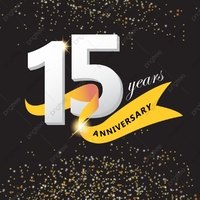The Film Censorship Office of the Third Reich
Film censorship in Germany started prior to WWI but during the Weimar Era degenerated into allowing films on prostitution, white slave trafficking, drug addiction, and films titillating audiences with stories about abortion, homosexualty, transvestism, adultry, gangsterism and so on. One could argue that it was only through the riots and violence attributed to the Nazi Party's stormtrooprs that put an end to military defeatism films such as All Quiet on the Western Front. Such films were of course forbidden after early 1933.
The Reich Censorship Office had offices in both Munich and Berlin. Either one could receive submissions to censor not only the actual motion picture, but every single other promotional piece attributed to a film. This meant all film stills, advertising, handbills, posters, and printed materials had to be individually approved by the Censorship Office before they were circulated in public. The Censorship Office's "rubberstamp" approval had to be printed on each poster and piece of printed matter. This symbol on printed matter came with the facsimile signature of a Censorship Board Head and a registration number and date. The censoship approval stamping was printed on, or alternatively, embossed into the film's lobby card photographs. You can see various versions of these symbols throughout our inventory of film ephemera.
A censorship embossed stamp on one of our lobby cards:
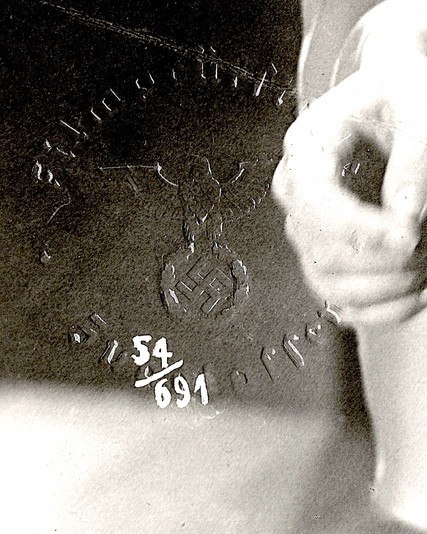
A censorship stamp of approval on one of our posters:
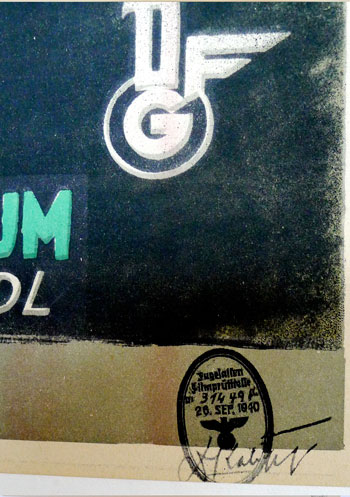
The first step in the process was for a film studio to submit a form to the Censorship Office, such as the one shown below from our Collection. It listed the poster/film stills/handbill/brochure etc on it and requested permission to use the materials in public.
The studio would receive a reply stating which items submitted were approved, and which if any were forbidden. We have the Censorship Office response to some such requests in our Collection, too.
A mock-up of a film brochure that had been submitted to the Censorship Office for the film The Riders of German East Africa:
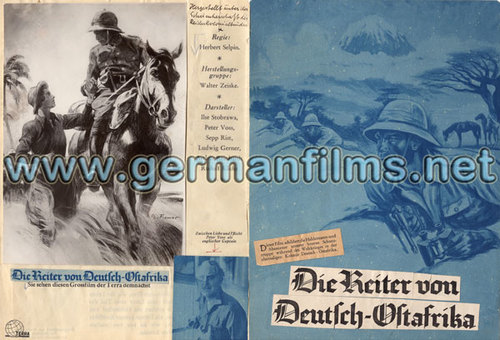
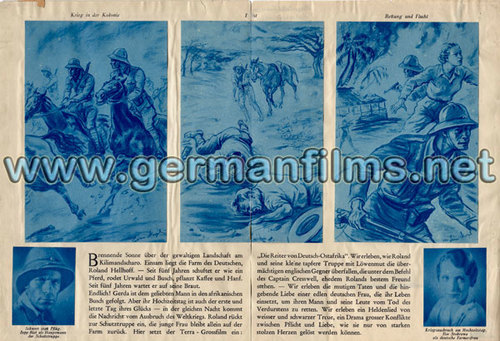
The film script would have had to have been vetted by the Censorship Office before the film was shot. Once it was finished the final motion picture print was submitted for screening by the Censorship Board and an official Censorship card was printed mapping out each film scene and every word of dialogue found in the film. This card was therefore often a booklet with 12-48 pages of text. It meant that a Censorship Office staffer or any government official could for example visit a theatre during a public run of the film and compare the film being shown against the "card." It had been found in the early days of the Third Reich, for example, that some Jewish cinema owners in fact had cut anti-Semitic scenes from the Swedish film Pettersson und Bendel without approval. It has been said by some film historians that prints submitted to Dr. Goebbels or his Reichsfilmintendant during WWII sometimes had footage cut which in fact was preserved in the actual cinema release prints.
The film censorship "card" fo the propaganda film Frisennot (1935) from our Collection -– the cover and an inside page of dialogue:
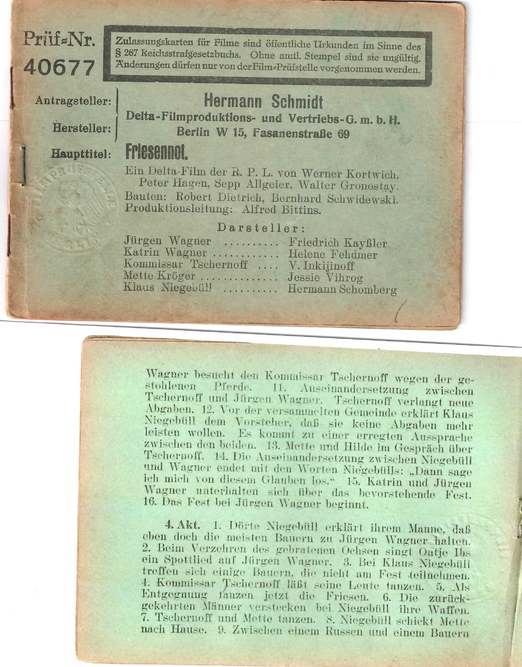
Film stills which were approved by the Censorship Office were then lodged permanently with the Reichfilmarchiv. We own original film stills from this Archive which are exceedingly rare. A great deal of the holdings of the Reichfilmarchiv was destroyed in salt mines in Lower Bavaria at the end of WWII. We even have a few stills out of this destruction which have the edges of surviving photos singed and/or "browned" by fire.
The stills submitted to the Censorship Office were printed from the original negatives of the cameraman who took the publicity and behind-the-scenes photos during a film shoot. This man was called in German a Standfotograf. Normally in this era he used a sheet-film camera, such as a Rolleiflex, and shot 4 x 5 inch film negatives or similar. Thus the prints sent in for approval were of the highest possible quality. We show below one such photograph from the Veit Harlan film Das unsterbliche Herz. Below the two front and back side photo images, a third photo compares the Censorship Office photo to the mass-produced "lobby card" later manufactured by the film studio, with the film title imposed along with the Tobis Film studio logo.
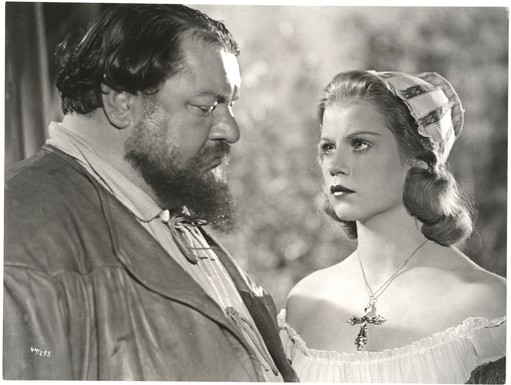
The Reich Ministry of Propaganda and Public Enlightenment under Dr. Goebbels oversaw the Reichfilmarchiv, as per the sticker on the verso of the photo:
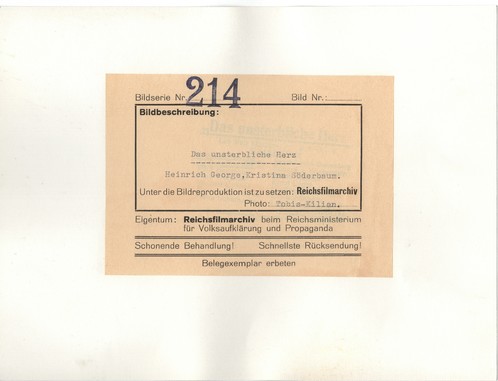
BELOW AT LEFT: The Censorship Office photo, and RIGHT, the studio mass-produced one. Even at a scanner setting of 600 dpi resolution, you can see the difference in sharpness and gamma that the original photo at left represents.
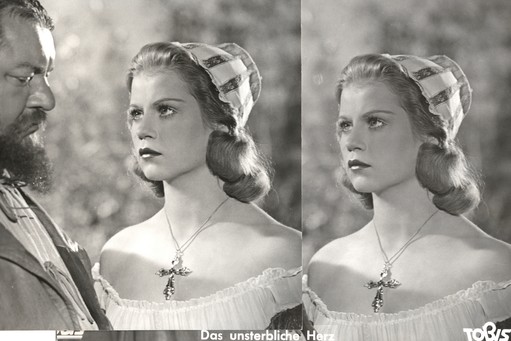
Our Collection has original Reichfilmarchiv photographs from the following Third Reich films:
Der Reiter von Deutsch-Ostafrika–41 stills (also the brochure mock-up shown above)
Ein Robinson – 23 stills
Ewige Wald – 22 stills (also a one-sided handbill mock-up)
Das unsterbliche Herz – 40 stills
Serenade – 70 stills (and a brochure mock.-up)
Unternehmen Michael
Das Mädchen Johanna (no photographs, but a brochure mock-up. )

